UX AND THE TREND OF CHATBOTS: CASES AND REFLECTIONS
A while ago, in 2013, the movie "Her" was released featuring a very different operating system interface than we were used to. The artificial intelligence-based conversational interface was introduced to the world in a practical way and raised the raw material for many philosophies and discussions between interaction designers. Today this type of solution is no longer surreal, of course in doses not as fluid yet as the film, but solutions such as Alexa , Siri and now the various chatbots gain significant space in the market and bring us numerous new possibilities for interaction and optimization Experience.
We now come to the wave of chatbots, which in various perspectives start in some cases to replace the use (and especially the need to search, choose, install, learn ...) of mobile applications. Within the new technological possibilities that arise each day we need to constantly think about how to reinvent the patterns of interactions and offer the good experiences also within these new contexts of use.
First of all let's go to the basic definitions of what chatbots are:
"(...) technology based on artificial intelligence consists ofvirtual robots that can function as an attendant of a brand, performing tasks that range from answering a basic question as to the operation of a product until requesting pizza for the user without the need of an app . " Startupi
"These are softwares that work within messaging applications. They are rule-based services and (sometimes) artificial intelligence, where you can talk and interact through messaging applications / applications. They can be based on rules (specific commands / follow well-defined navigation flows) or on artificial intelligence (learns and understands natural language / learns over time and with other services / data). " Chatbotsbrasil
Chatbots generally work within messaging tools such as Messenger, Whatsapp or Slack, and we already see a number of solutions exploiting these possibilities as a way to simplify the use of a faster and more natural, also less "bureaucratic" (since You use apps that ALREADY have installed), and propose new ways to access services.
"Chat helps people find the things they want and need, as well as delivering great services and information directly into an interface they already know and love." Venturebeat
The feeling of chatbots experiences
Of course, not everything is just joy. Today's chatbots in many cases still force you to make some effort to speak the "language" (we have the correct / programmed and not totally natural phrases) that the bot will understand. For this post I ended up testing a few different bots and the overall conclusion is that the first contact is a lot of fun, it seems kind of smart even, to the point where you start to "err" and it gently corrects you and tries to help you get it right. It's like talking to someone on the phone who more than once does not understand what you say and asks to repeat, annoys you a little
In spite of this, the first access of practically all chatbots has a nice onboarding with quick accesses and explanations that guide you to the proposal of value of the bot. The following hits where you "pull subject" with the bot can always start with a simple "hi", which is cool and is something that you would do in a chat, we already see some patterns of interaction forming. All bots respond to hi, they are willing to offer you options as well. Another peculiar thing that I thought was great was asking the chatbots "what do you do?" And they generally have an answer about their possible features.
Maybe it's an interesting challenge to think about the usability and "wow" experiences of the chatbots. We're talking about practical, text-based solutions that, even without a myriad of navigations and animated effects, can generate quite playful experiences.
"The difficulty in building chatbot is less a technical one and more an issue of user experience. The most successful bots will be the ones that users want to come back to regularly and that provides consistent value. " Matt Hartman, Director of Seed Investments at Betaworks
In the universe of chatbots the bot personality is a great key point of experience. No one wants to talk to someone boring or boring, in the communicational interfaces the "wow" lives in the personality and flows coherent, diversified and within the possible, ready to deal with improvisation in a witty way.
Cases of chatbots that are already rolling around
Below are some solutions from companies that are already delivering value to users with chatbots for different types of tasks and niches.
Uber
Need to call Uber but do not have the application installed? No problem! Uber chatbot is there for that, giving a hello to him in Messenger with his address he provides you with a driver in the same way that the app would.
KLM Airlines
Chatbot in Messenger that after your checkin passes information, boarding card and warns of the flight calls in addition to offers some customer service features such as seat change.
Talk7
Chatbot in Brazil where the buyer of a store can ask questions from the seller until receiving suggestions and make the purchase order via bot.
Superplayer
This friendly Superplayer bot comes with a name and a super laid back personality. Zak is your DJ bot that arranges songs according to what you ask for being a genre, an artist or even a feeling. It works in both Messenger and Slack, and can even be the collective DJ of the galley at work.
Duolingo
Duolingo does not tire of being a success case in terms of UX. For the bots it was no different. In these chatbots-based apps the solution offers the practice of language in conversation with writing and chat audios with multilingual robots.
Hi Poncho
The relaxed Poncho, besides exchanging some ideas and trolling you a little, has the main function of passing information about the weather and weather, while giving the "take a coat" hint in the middle of it all.
And will they replace the apps?
The theories on this issue are divergent and controversial. If you can have the service or solution without installing an application or having to go through multiple screens, would not that be solving your problem already? As in the example of calling a Uber where the goal is the offset, how influenced is your experience by the beautiful interface and feedbacks in the app? Does the "evidence" question, which is part of the principles of service design, necessarily increase perceived value?
When we use a totally amazing application, with beautiful interfaces and fantastic navigation, the path itself becomes part of the "WOW" experience with that particular brand. Despite this, in most cases you just want to "solve your problem", and theoretically the faster and more invisible you achieve that goal, the better.
The very concept of " anticipatory design " brings this idea of zero interface where the most efficient is to go through the task without having to give many inputs and commands. Not to mention the recent studies that showed that 85% of people use only 4 applications despite the many others installed, demonstrating in practice this certain perspective "detachment" from the use of apps in their compulsory form that not so long ago we saw happen in the phase Of "let's make an app for everything" (about this is worth reading "The best interface is in the interface" , Golden Krishna).
The arguments against the apps and in favor of the chatbots also go through the idea of the paradox of choosing to find the ideal application in the midst of those so many that fill the app stores (without even talking about the memory usage of people having to install an app for each thing Of life) and the need to learn new interfaces with each new product or solution. This argument is supported by the fact that messaging applications like Messenger, Whatsapp, definitely RUN! People use, love and are widely familiar. If you see from children to the elderly, regardless of cultural background or schooling using a Whatsapp of life and communicating naturally, there is a good sign that the thing really should have worked.
The evolution of artificial intelligence, which will support many chatbots and so many other useful solutions in the very near future, also support the trend of conversational robots. If AI is going to get more and more efficient, why not make use of it to get rid of old paradigms towards the natural interactions that dispense screens, keys, buttons and form fields?
Particularly the subject of interface invisibility is something that fascinates me and UX solutions that will support the new services indicate that less and less we will have to adapt and learn the "language" and way of interaction of the machines, entering In an age where technologies will adapt to our humanoid behavior!
To close, that "slap in the face" movement of "no more apps for everything" in the "best interface is no interface" talk:
[Extra] Starting a chatbot to call your
Contents on the subject are everywhere and from different points of view. For those who want to read or see more chatbots, check out these links:
- Excellent visual step by step how to plan and create your own chatbot | Https://www.behance.net/gallery/37453869/Designing-a-Chatbot-UX-Design-Process-Case-Study
- Google Bots Play with thousands of chatbots for various platforms | Https://botlist.co/
- There is also this tip of several examples of bots and texts that are at least inspirational for your chatbot | Https://medium.com/boltmades-31-days-of-bots-in-may
Author: Priscila Albuquerque
Source: http://catarinasdesign.com.br/ux-e-a-tendencia-dos-chatbots-cases-e-reflexoes/
Translated and adapted by: @kozak

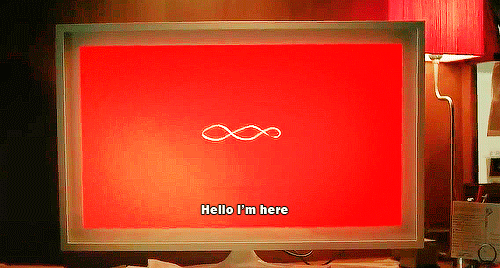
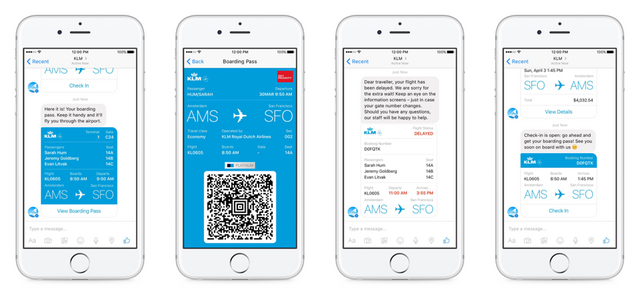
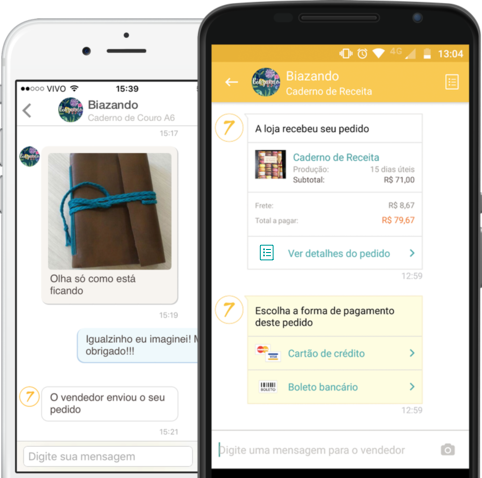
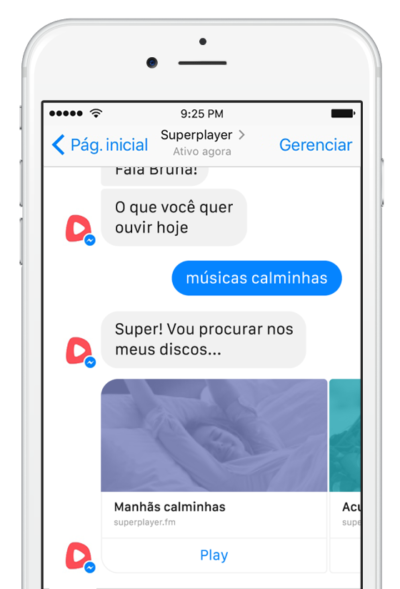
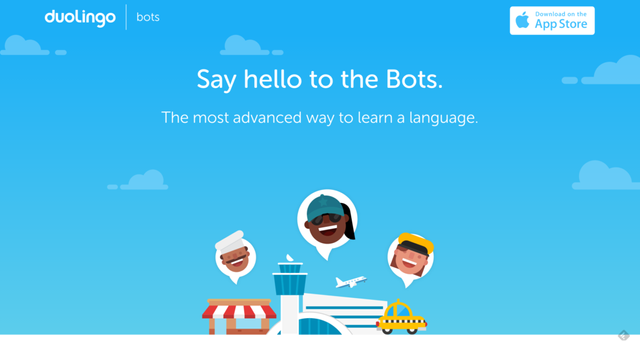
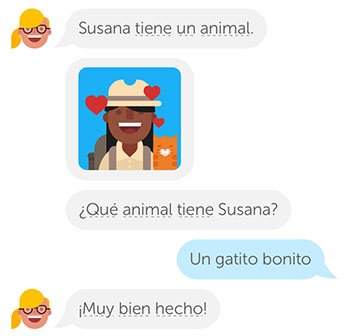
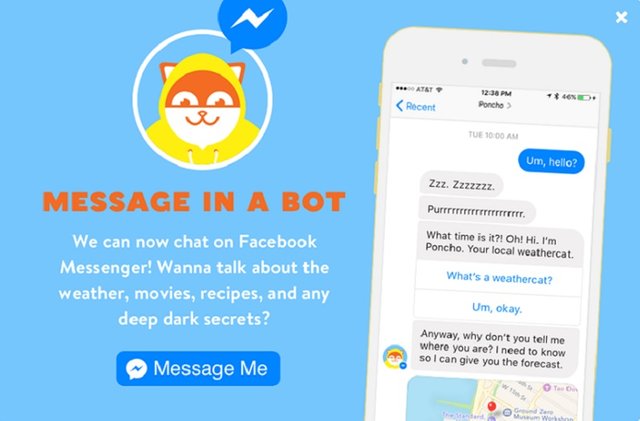
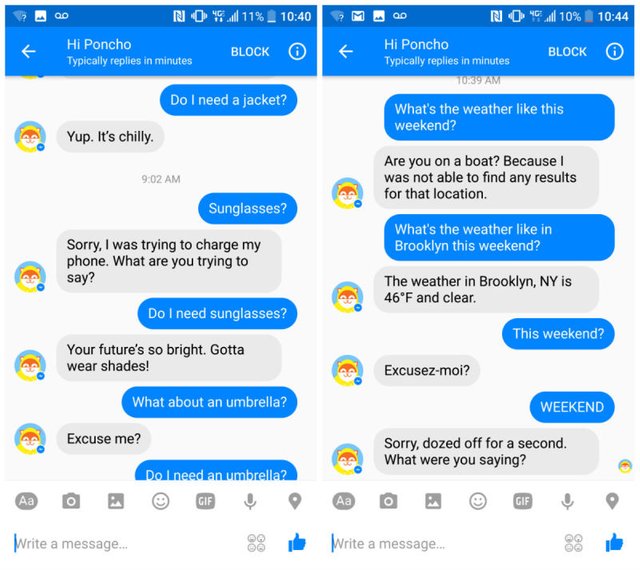

Opportunity is the key word...still in the infancy of what bots will bring. Another use-case I've always been intrigued by - https://www.typeform.com/blog/human-experience/cui
Bots will build experiences!
Thanks for a great post @kozak
It is interesting; however, adoption will rely on the masses being willing to give up what they perceive as 'control' by being able to use the app. Once people are willing to give up that perceived 'control' and leave the actions up to a bot then mass adoption will occur.
hope world won't be full of bots...
This post has been chosen to feature in today's Muxxybot curation post....*....